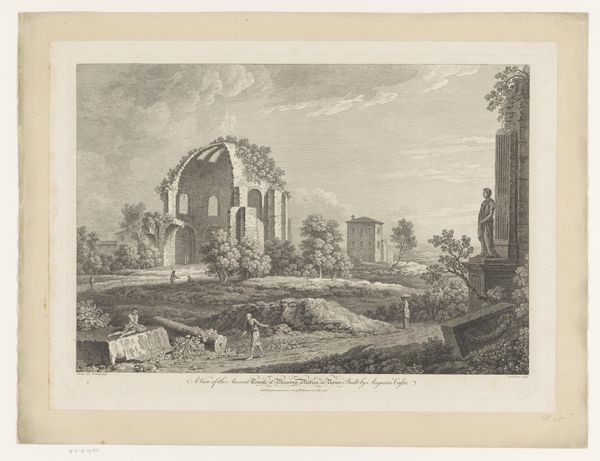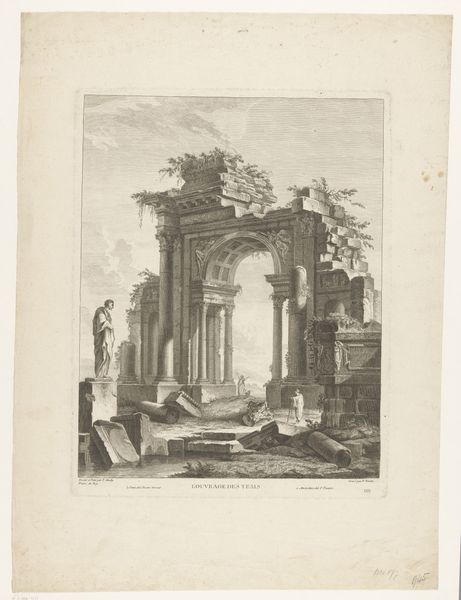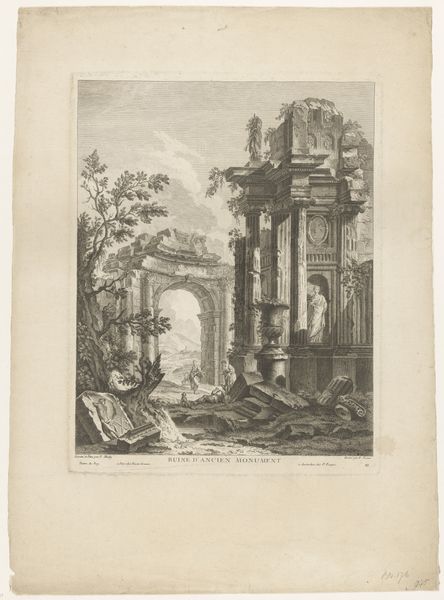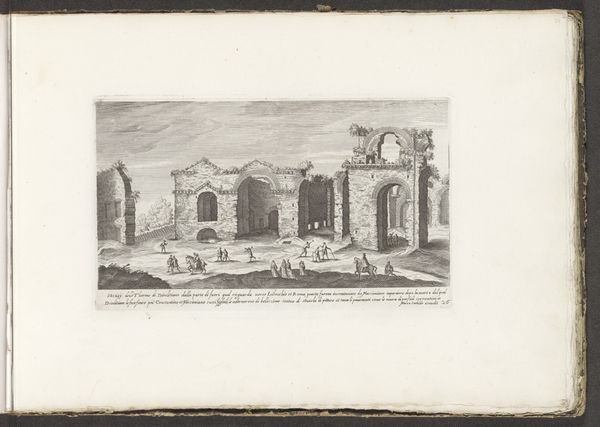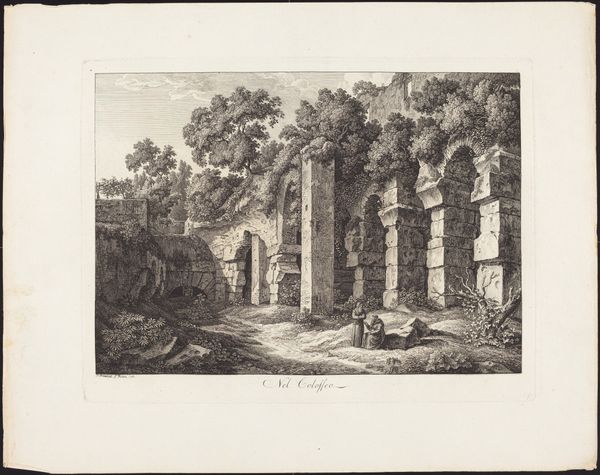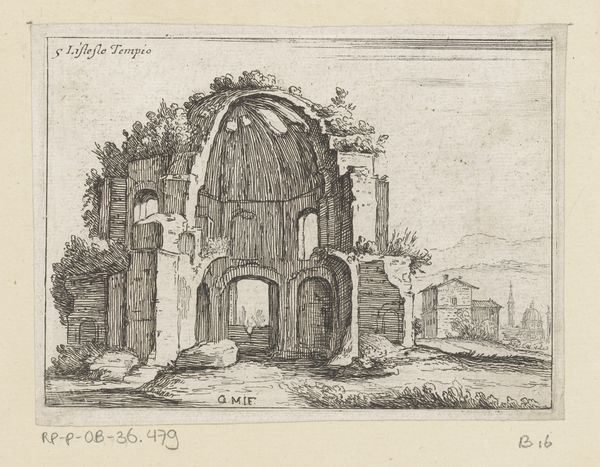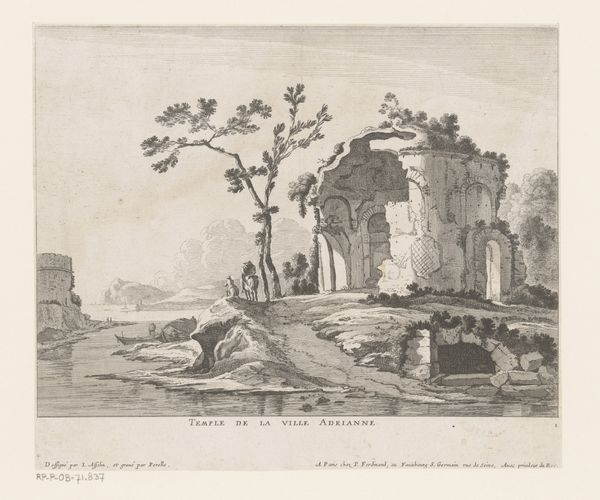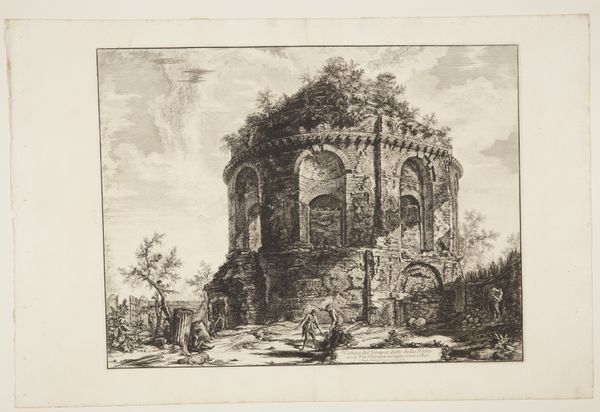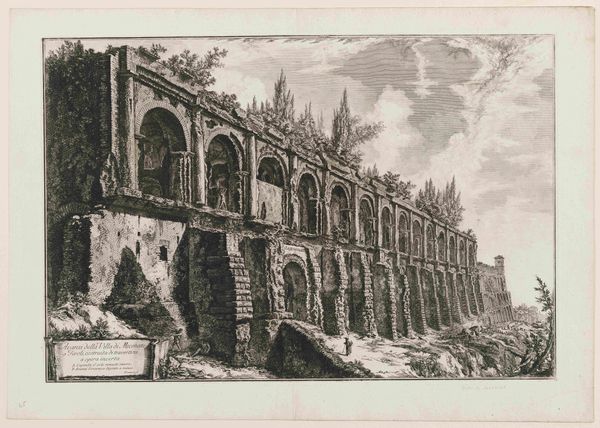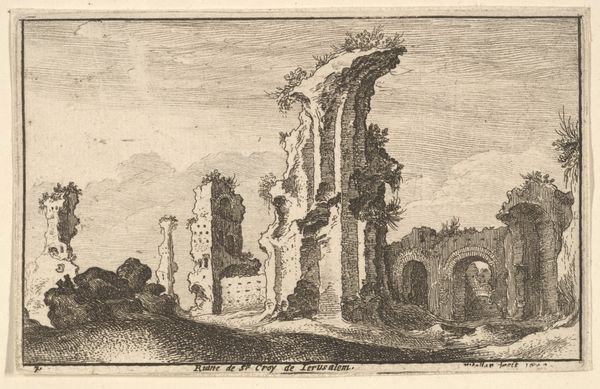
drawing, print, etching, engraving, architecture
#
drawing
#
neoclacissism
# print
#
etching
#
landscape
#
cityscape
#
engraving
#
architecture
Dimensions: height 370 mm, width 483 mm
Copyright: Rijks Museum: Open Domain
Curator: Looking at François Morel's 1798 etching, engraving and print titled "Gezicht op de tempel van Minerva Medica" (View of the Temple of Minerva Medica), I am struck by how history is etched--quite literally-- into the very materials of the image. Editor: It's moody, almost haunting, isn't it? The skeletal remains of architecture rising from what appears to be overgrown land... decay beautifully captured. Curator: Absolutely, and consider what the crumbling state symbolizes. This wasn't merely a depiction of architecture; it’s a study of the temporal politics embedded in architectural ruins and the social processes that transformed this classical site into its contemporary disarray. Who controlled these lands after its abandonment? Editor: And what stories are literally being overwritten here? We’re presented with a depiction of stone and etching. These physical forms are inseparable from the historical content—materials reflecting the slow violence of time. The Temple wasn't built in a vacuum; the means of its construction, the quarrying of the stone, its intended function within a particular society, everything feeds into this scene of gentle desolation. Curator: Precisely! And who benefits from these visual narratives? Think about the artistic choices--the landscape framing a once grand, but currently deteriorating, civic structure; it implicitly invites the viewer to grapple with larger questions about the mutability of power structures. Even the two indistinct figures who walk away from the temple appear to acknowledge this decline. Editor: Their existence, scale, and position are only achieved via particular social circumstances. The engraver and printer have participated in production: who bought, sold, or displayed the image? These factors are tied to larger material conditions... paper and ink transformed and dispersed for particular ends. Curator: Yes. A reminder that even images, seemingly delicate in their lines and rendering, participate actively in the shaping of societal memory and the dissemination of values across generations. Editor: Ultimately, that is to say, what can appear permanent to us rarely is. Time is the grand recycler of materials and meanings.
Comments
No comments
Be the first to comment and join the conversation on the ultimate creative platform.
